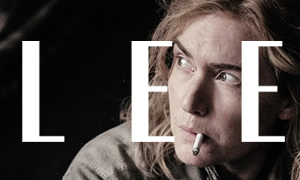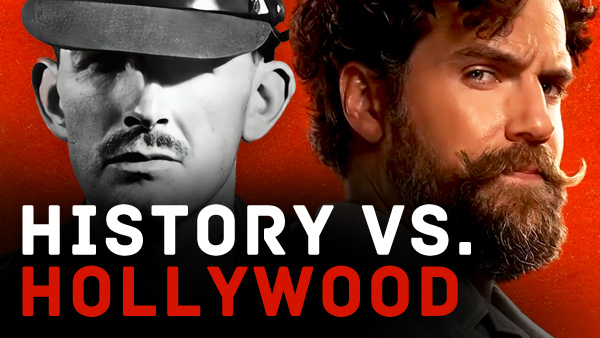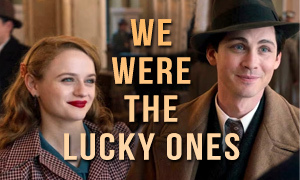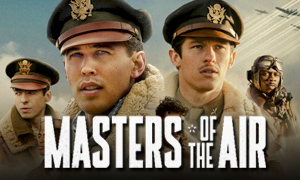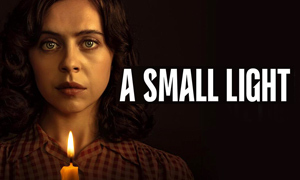The Woman King: History vs. Hollywood
Is the regiment of female fighters in the movie based on an actual group of female Dahomey warriors?
Yes. The Woman King true story confirms that the all-female military regiment existed and was called the Agojie or Mino (Our Mothers). They were referred to as the Dahomey Amazons by Western Europeans who wrote about them, an obvious nod to the fierce female warriors in Greek mythology. The Agojie existed for much of the Kingdom of Dahomey's existence (c. 1600-1904), forming either sometime during King Houegbadja's reign (1645-1685) or in the early 1700s. French slaver Jean-Pierre Thibault observed them at the Dahomean port of Ouidah in 1725. They made their first appearance in written history in 1729.
One theory is that the creation of an all-female military regiment became necessary due to the high number of casualties the kingdom was suffering in conflicts with neighboring West African states. In the least, this seems to explain the Agojie's expansion under King Ghezo (portrayed by John Boyega) from the hundreds to the thousands. Another theory suggests the Agojie's origins can be traced to Dahomey's skilled female hunters who operated in teams known a gbeto. Later, the gbeto evolved into the Dahomey Amazons (Agojie) after they were initially recruited for a palace guard unit in the early 1700s, possibly under the reign of Queen Hangbe (1708-1711). This makes some sense given that men were forbidden from being in the palace precincts while Dahomean women were not.
Is Viola Davis' character, Nanisca, based on a real Dahomey warrior?
In movie, Nanisca (Viola Davis) is the general of the Agojie (Dahomey Amazons). While she appears to be almost entirely fictional, French naval officer Jean Bayol, who visited the region in December 1889, wrote of watching a teenage recruit named Nanisca, "who had not yet killed anyone." He describes her approaching a young prisoner sitting bound in a basket. Nanisca took her sword in both hands and swung three times, almost entirely decapitating the prisoner. She then cut the remaining bit of flesh that held the head to the trunk and "squeezed the blood off her weapon and swallowed it." While Viola Davis' character is much older, it's possible her name was inspired by the teenage Nanisca the French officer observed.
While conducting The Woman King fact-check, we learned that Viola Davis' character was significantly fictionalized when compared to the real-life female generals of Dahomey. For example, General Seh-Dong-Hong-Beh (depicted in the image below) commanded the Agojie during at least part of the reign of King Ghezo (portrayed by John Boyega). In 1851, Seh-Dong-Hong-Beh led an army of 6,000 Dahomey female warriors against the Egba fortress of Abeokuta in order to obtain slaves for the Dahomey slave trade. The battle took its toll on the Agojie. Their swords, spears, and bows were largely ineffective against Egba's European cannons. Only about 1,200 Agojie warriors survived the lengthy battle. Her actions contradict the anti-slavery stance of Nanisca in the movie.
Did the Kingdom of Dahomey participate in slavery and slave trading?
In answering the question, "How accurate is The Woman King?" we learned that in real life, the Dahomey are much more the villains than the heroes. The Kingdom of Dahomey was a bloodthirsty society bent on conquest. It was customary for the Dahomey to return home with the rotting heads and genitals of those they killed in battle. They conquered neighboring African states and took their citizens as slaves, selling many in the Atlantic slave trade in exchange for items like rifles, tobacco, and alcohol. Many of the slaves they sold ended up in America. They also kept some slaves for themselves to work on royal plantations. The business of slavery is what brought Dahomey most of its wealth. For them, it very much came down to either enslave others or become enslaved yourself.
The Agojie (women warriors) fought in slave raids along with the male fighters. There are accounts of Dahomey warriors conducting slave raids on villages where they cut the heads off of the elderly and rip the bottom jaw bones off others. During the raids, they'd burn the villages to the ground. Those who they let live, including the children, were taken captive and sold as slaves. The movie strategically downplays this part of Dahomey's history, so as to not complicate the story with the truth.
Each year in Dahomey, roughly 500 slaves and criminals were mass executed in large-scale human sacrifices during the religious ceremonies of a festival known as the Annual Customs of Dahomey. Most were sacrificed by way of decapitation, a method of killing widely used by the Dahomean kings. The 1727 Annual Customs of the Dahomey ceremony reportedly saw as many as 4,000 people sacrificed.
Were the Agojie allowed to marry?
No. In exploring The Woman King true story, we discovered that Dahomey's female warriors, dubbed the Dahomey Amazons by Western European writers, were formally married to the king. This rendered them celibate. In the movie, Nawi (Thuso Mbedu) enters into a romance with a half-Dahomey/half-Portuguese slaver, portrayed by Jordan Bolger. Not only does the romance feel somewhat out of place in the film, it likely never would have happened in real life.
English naval officer Frederick Forbes recorded his own observations in 1850, writing, "The Amazons are not supposed to marry, and, by their own statement, they have changed their sex. 'We are men,' they say, 'not women.' All dress alike, diet alike, and male and female emulate each other: what the males do, the Amazons will endeavor to surpass." This theme of outdoing their male counterparts is demonstrated in the movie when a male and female warrior stand with a double-tipped spear between their chests, each leaning in until the male warrior yields to the pain first.
In 1864, Captain Richard F. Burton documented seeing over 2,000 Dahomey Amazons, stating that roughly two-thirds of them shared passions and love between each other.
Is John Boyega's character, King Ghezo, based on a real King of Dahomey?
Yes. Ghezo was King of Dahomey from 1818 to 1858 and was known for his military reform. It's true that under his rule, the Agojie (Dahomey female warriors) became a significant part of the Dahomean military, expanding from roughly 600 women to as many as 6,000. While colonization by the Europeans was indeed a concern, it didn't escalate until after King Ghezo's reign. Territorial disputes with the French that began in 1863 led to the First Franco-Dahomean War in 1890 and the Second Franco-Dahomean War in 1892. Dahomey was defeated by the French in 1894 and the kingdom became French Dahomey, a colony of France.
The Kingdom of Dahomey had attained most of its wealth through the slave trade and King Ghezo was a strong proponent of slavery. He had risen to power though a coup with the help of Brazilian slave trader Francisco Félix de Sousa. Dahomey took the people of neighboring African regions it conquered and sold them in the overseas slave trade. They also kept slaves for themselves to work on the royal plantations. King Ghezo reportedly told the British, "The slave trade has been the ruling principle of my people. It is the source of their glory and wealth. Their songs celebrate their victories and the mother lulls the child to sleep with notes of triumph over an enemy reduced to slavery" (The Fortunes of Africa).
In reality, the main conflict with white Europeans during King Ghezo's reign came through the efforts of the British to bring an end to the Atlantic slave trade, in which the Kingdom of Dahomey was a major player. The British had to blockade the ports of Dahomey in order to put a stop to the Atlantic slave trade. Even after promising to end the slave trade in 1852, the year after the British imposed the blockade, King Ghezo resumed trading slaves in 1857. To this end, King Ghezo and the Kingdom of Dahomey are the villains of the true story.
Is the white slave trader Santo Ferreira based on a real person?
Actor Hero Fiennes Tiffin's character, the villain Santo Ferreira, is a white slave trader who speaks Portuguese and is looking for strong black laborers (slaves) to take back to Brazil. While he doesn't seem to have a direct real-life counterpart, he was possibly loosely inspired by Brazilian slave trader Francisco Félix de Sousa, who in real life wasn't an enemy but rather helped King Ghezo rise to power. To return the favor, King Ghezo made de Sousa the principal trade official at the port of Whydah. de Sousa became a key figure in the Dahomey slave trade and the de Sousa family had a significant amount of political influence during Ghezo's reign.
Had the Kingdom of Dahomey been under the control of the Oyo Empire?
Yes. After being invaded by and losing in warfare with the nearby Oyo Empire to the northeast, Dahomey became a tributary of the Oyo Empire around 1730. It was forced to make annual payments (or tributes) to Oyo in the form of slaves. As seen in The Woman King movie, a fact-check confirms that King Ghezo's armies freed Dahomey from its status as a tribute of the Oyo Empire.
How many female warriors were part of the Agojie at their peak?
By the mid-1800s under the rule of King Ghezo, the Agojie reportedly made up about a third of the Dahomey army. According to varying accounts, these women warriors numbered upwards of 6,000. The Kingdom of Dahomey was an absolute monarchy. The king's authority was rigid and unquestioned. He oversaw a tiered society made up of royalty, commoners, and slaves. The Agojie sat near the top. They were wealthy and akin to royalty.
Was Thuso Mbedu's character, Nawi, inspired by a real person?
Nawi (Thuso Mbedu), who is a teenager in the movie and training to become a Dahomey Amazon (Agojie), seems to have been very loosely inspired by the last surviving female warrior of Dahomey. At over 100 years old, the real Nawi was interviewed in 1978, the year before her death. She claimed that she fought the French in the Second Franco-Dahomean War in 1892. Unlike what's seen in The Woman King movie, Nawi was not alive during King Ghezo's reign (1818-1859).
It is true that children were enrolled to be Agojie, with some starting training from as young as 8 years old. In the film, we eventually discover Nawi shares a special connection with Nanisca (Viola Davis).
How did Dahomey women become Agojie warriors?
In the movie, the defiant teenager, Nawi (Thuso Mbedu), refuses to marry any of her adequate suitors. In frustration, her domineering father offers her up as a gift to the young King Ghezo (John Boyega). However, Nawi is intercepted by the female warrior Izogie (Lashana Lynch), who is inspired by her strength and recruits her to be trained by Nanisca (Viola Davis). Nawi's path to becoming an Agojie is a realistic one. Fathers or husbands who were displeased with their daughter or wife's behavior would complain to the king, resulting in the daughter or wife being involuntarily enrolled to become an Agojie.
Some women soldiers were recruited from free Dahomean women who enrolled voluntarily. It was also not uncommon for foreign captives to be forced to become Agojie warriors.
Were the Agojie made up of different regiments?
Yes. By the mid-19th century, Dahomey's female warriors, the Agojie, were made up of riflewomen, huntresses, archers, reapers and gunners. They each had their own uniforms and were commanded by women. The women's army of Dahomey had three main wings: the left and right wings, and the elite middle wing or Fanti. Each wing was made up of the five regiments. In the latter half of the 19th century, it was not uncommon to see these female warriors armed with Winchester rifles, knives and clubs.
Did the Agojie (Dahomey Amazons) prefer trading in palm oil over slaves?
From the 1840 to 1870, Dahomey's female warriors, the Agojie, favored trading in palm oil over slaves, which put them at odds with their male warrior counterparts. By the 1840s, the Royal Navy had made slave trading much more difficult along the African coast. As a result, a polarization developed between Dahomey's two major political parties, the Elephant Party and the Fly Party. The Elephant Party, which included the Crown, male military officials, and wealthy traders, was in favor of continuing the slave trade. The Fly Party, which included the Agojie, entrepreneurs, shrine priests, trade officials, and middle-level administrators, wished to focus on legitimate international trade and restoring commercial relations with England. -The Journal of African History
The fictional General Nanisca (Viola Davis) is staunchly opposed to slave trading in the film, which seems to be a bit of an exaggeration of the Agojie's actual stance at the time. As stated earlier, the Agojie had a history of participating in slave raids. Even after Britain succeeded in stopping the Kingdom of Dahomey from engaging in the overseas slave trade, Dahomey still kept slaves to work its palm plantations. Each Agoji woman also had slaves of her own. When an Agoji warrior left the palace, they were preceded by a slave girl who rang a bell to let others know they were approaching. Citizens were to keep at a distance and look away from the women warriors. To touch the Agoji meant death.
Were the Agojie as brave as they're portrayed to be in The Woman King movie?
Yes. We largely know this from the praises they earned from the French, who fought them in two wars in the 1890s. One French Foreign Legionnaire praised them as "warrioresses… fight with extreme valor, always ahead of the other troops. They are outstandingly brave … well trained for combat and very disciplined" (Guardian.ng). They were further described by the French as having "incredible courage and audacity" in battle (The Journal of African History).
European observers noted that they handled themselves "admirably" in hand-to-hand combat with the French, even if they were decisively crushed in the one major battle they participated in, Cotonou, during the First Franco-Dahomean War (1890). In the Second Franco-Dahomean War (1892), special Agojie units targeted French officers. The Agojie participated in several battles but proved to be little match for the superior weaponry and longer bayonets used by the French soldiers. In one battle, 417 Agojie were killed in a matter of hours, with nearly all falling at the tips of French bayonets.
Did the Agojie exist until the Kingdom of Dahomey fell?
Yes. In determining how accurate is The Woman King movie, we learned that the group of woman fighters was still in existence when the Kingdom of Dahomey was disestablished in 1904 after suffering heavy military defeats to the French in the 1890s. Surviving veterans of the Agojie (Dahomey Amazons) were rumored to have trained their descendants in the skills of the Agojie even after the fall of the kingdom and on into the 20th century.
Did the Agojie inspire Black Panther's all-female special forces unit, the Dora Milaje?
Yes. Wakanda's all-female special forces division, the Dora Milaje, in 2018's Black Panther was loosely inspired by the Agojie (aka Dahomey Amazons). Black Panther star Lupita Nyong'o, who portrayed Nakia, a spy for the Dora Milaje, was so interested in the Agojie that she took part in a documentary about them for the UK's Channel 4. In the documentary, Nyong'o travels across Benin, formerly the Kingdom of Dahomey, to learn more about these brave Dahomey warriors.
Was The Woman King filmed in Africa?
Yes. "We shot in South Africa, the majority in Cape Town. We built our entire palace there," director Gina Prince-Bythewood told The New York Times. The deep jungle scenes were shot in KwaZulu-Natal.
Is The Woman King historically accurate?
Depicting the Dahomey as heroes or the "good guys" is quite a stretch, especially given their lucrative role in the slave trade and King Ghezo's reluctance to put an end to it. The Dahomey were brutal conquerors who enslaved their enemies and sold most of them for profit. They thrived on slavery, and it was the source of most of the kingdom's wealth. In fact, many slaves that they sold or traded were sent to America in the transatlantic slave trade. While the film acknowledges this troubling part of Dahomey's history, it creates the fictional Nanisca (Viola Davis) to stand against it, a character that didn't exist in real life.
What the film does get correct is its depiction of the Agojie (Dahomey Amazons) as capable and fearsome fighters. It's also true that under King Ghezo, Dahomey fought to free itself from the control of the Oyo Empire. Colonialization by Europeans was indeed a threat, but Dahomey's territorial conflicts with the French didn't begin until 1863, several years after King Ghezo's reign.
To make a movie that celebrates the Dahomey is a glaring example of how Hollywood likes to morph history, either by way of omission or outright fabrication. If you're going to watch The Woman King, read about the true story of the Kingdom of Dahomey first. Otherwise, take everything you're seeing with a grain of salt.
